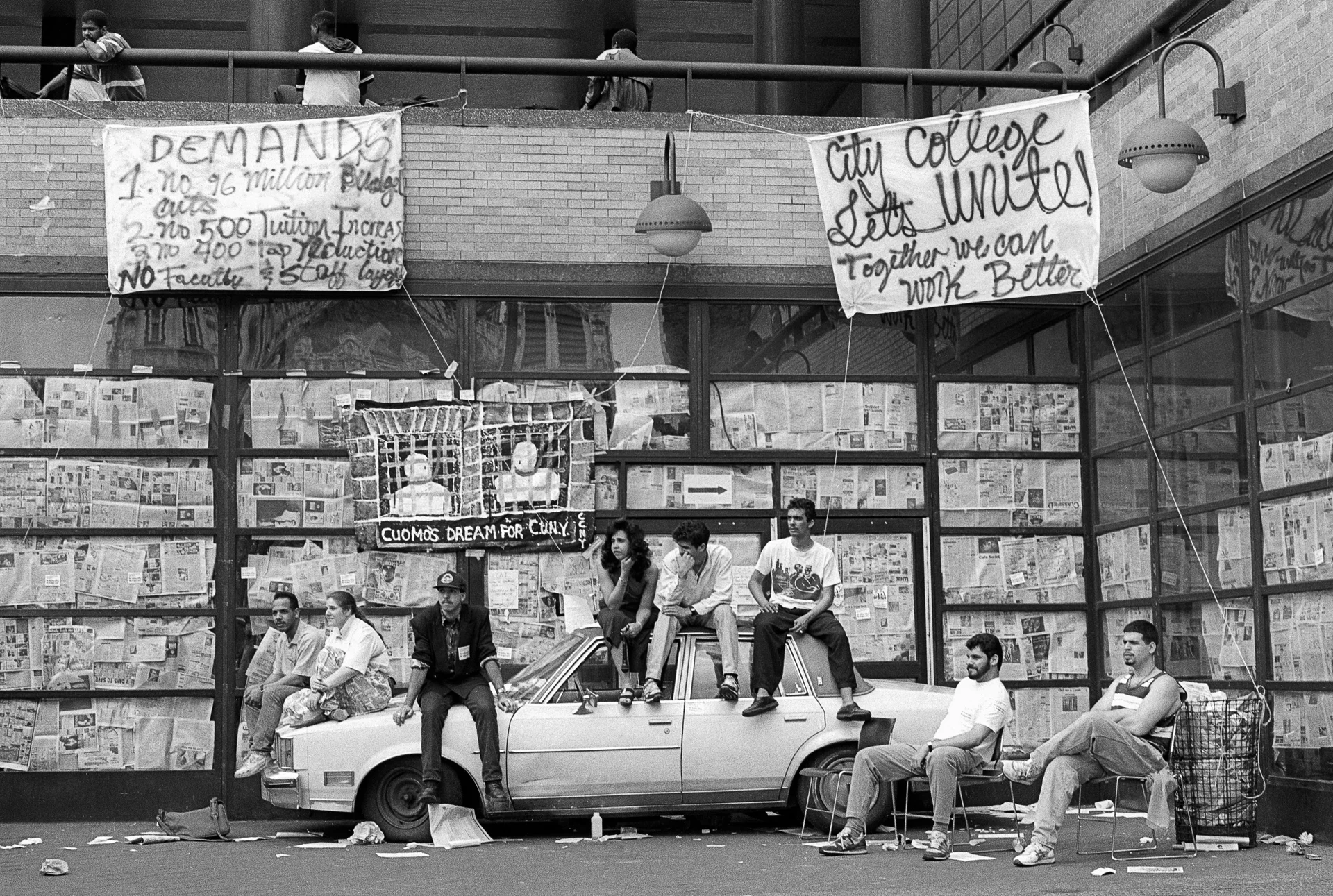Who’s Streets, Our Streets!
As we view the results of the 2024 election and the reign the Trump administration has unleashed on America, it is important to take a look at history.
In recent days I have found it suffocating to constantly witness the assault on Black and Brown communities across this country. But this is not new.
History is not repeating itself — it is shouting at us. White supremacy and capitalism have always haunted us. Now, they are in plain sight again.
We are fighting the same struggles that New Yorkers fought in the 1980s through the early 2000s. The question becomes: how do we show up? How do we resist these forces? How do we organize for our freedoms?
The Exhibition
Whose Streets? Our Streets! is a photojournalism exhibition first shown by the Bronx Documentary Center (BDC) in 2017. It features the work of 37 film photographers who documented the streets of New York City from the 1980s through the early 2000s — a period of political and economic darkness.
Many issues were at the forefront, but the common theme across these images was ordinary New Yorkers standing together for change. Their struggles were many, but their enemy was one. They understood that. Civil disobedience was the weapon they had — and they used it.
This was a time when crime was weaponized as an excuse for police brutality. A time when mostly white police officers were trained to brutalize Black and Brown bodies. The issues ranged across police violence, immigrant rights, abortion, education, housing, racism, Zionism, homophobia, international war, and AIDS.
Notice how these are the same issues we are still fighting today.
Why History Matters
It is easy to get lost in fearmongering, to feel helpless. But it is vital in moments like this to review history — to understand what must be done.
As creatives, our art must be rooted in freedom. Without freedom, there is no art. We owe it to ourselves, and to our communities, to document reality and hold those in power accountable. We must remember the actions taken before us — the risks, the resistance, the sacrifices made to dismantle systems built to destroy us.
It will take more than an Instagram post or an online presence to fight back.
Standing on History
Walking through this exhibition was deeply moving. Beyond the activism shown, I felt the weight of home. As a New Yorker, the streets I grew up on, the corners I’ve stood on, are ingrained with resistance and the human experience.
The Bronx has been vilified, along with Brooklyn. But we have endured. We have fought so much to be where we are today.
These photographers put themselves on the line — not for themselves, but for humanity. Their causes were not abstract politics; they were reality. Not the 9–5 grind for survival, but the struggle for dignity and freedom.
Viewing the faces, the bodies, the emotions captured in those images — it is all so real. Though these photographs were taken before my time, they feel deeply personal. The raw energy in each frame should fuel us today.
Fight
We need bodies. We need a collective conscience to say: enough. We are tired of being dehumanized, controlled, erased by systems that do not serve us.
There is Trump and his goons, and there will be more of them to come.
But if we create spaces where we can organize, educate, and resist — we will win. We can win.
I am just a student, ordinary compared to the artists who came before me. But I know what we are witnessing now is nothing less than an attempt to erase who we are as human beings.
I have never felt more called to be in the streets — to fight for freedom, for myself and for all of us. To stand behind my camera, documenting our history. Because our voices are weapons. Our cameras are weapons.
They will not rewrite history — because we are here to write it together.
Written by Jeremiah C



